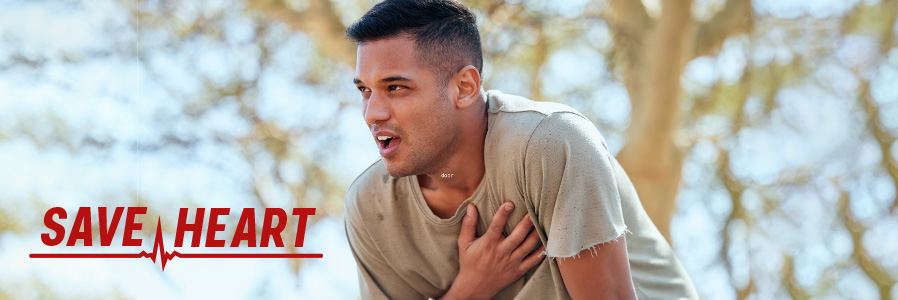Outdoor Sudden Cardiac Arrest in Your Community
WHAT YOU NEED TO KNOW – AND DO – WHEN EVERY SECOND COUNTS
Your community matters to you. That means that the people who live there, play there, and work there are safe from harm and protected against unforeseen emergencies.
No community can ever completely safeguard itself from accidents. That’s why local communities have first responders in place-police, fire, emergency services and healthcare professionals are on the job every day, working hard to keep people safe.
But sometimes, emergencies happen that require immediate attention from ordinary people – lay responders -before emergency personnel arrive on the scene. This is especially true with Sudden Cardiac Arrest (SCA), which strikes people without warning and often without regard to age, sex, ethnicity, and even health profile. Being able to understand what is happening and respond quickly can make all of the difference between saving or losing a life.
Here are some of the things that every person in every community should know to be prepared in the event of a sudden cardiac arrest emergency. Learning this little bit of information now can help save lives later.
What you should look for – Recognizing Sudden Cardiac Arrest:
- Common signs of Sudden Cardiac Arrest include sudden collapse, no pulse, no breathing, and loss of consciousness.
- Sudden Cardiac Arrest is different than a heart attack. SCA is an electrical malfunction in the heart, while a heart attack is a ‘plumbing’ problem where blood flow is blocked. While both mean you should call 911 immediately, SCA is more life-threatening and requires immediate action from lay responders.
What to do – Immediate Action is needed:
- Call 9-1-1 Immediately to get professional first responders on the way. But…don’t wait for emergency personnel to arrive – take action yourself.
- If the person is unresponsive and not breathing, start CPR (cardiopulmonary resuscitation) Immediately. Even if you’ve never been trained in CPR, just push hard and fast on the victim’s chest
- Look For, Retrieve, and Use an AED (Automated External Defibrillator): This is perhaps the most critical. While CPR itself can help ‘buy’ time by keeping blood flowing to vital organs, only an AED can effectively restore an SCA victim’s heart back to a normal rhythm. AEDs are designed to be simple for anyone-trained or untrained- to use.
- Time is Critical: for every minute that passes, the chance of survival decreases by 10%. Seconds count. Conversely, using an AED within 2-3 minutes of SCA dramatically increases the victim’s chances for survival- by 70% or more.
Proactive Efforts – AED Awareness and Access:
- Make Sure Everyone knows where your Community’s AEDs are located. Hold a ribbon-cutting or launch event when a new AED is placed, install AED signs above AED cabinets, and place AEDs in high-traffic, visible public places (never lock AEDs or put them in inconspicuous locations).
- Encourage Outdoor AED placement in your community. Today, 99% of AEDs are installed indoors, sometimes locked or inaccessible during off-hours. Advocate for AEDs to be placed outdoors inside all-weather, temperature-regulated, and monitored cabinets to offer 24 x 7 protection. Outdoor AEDs & cabinets are ideal for athletic fields and courts, parks, trails, schools & universities, marinas, business districts- and any outdoor locations where people congregate
- Contact us at SaveHeart by HeartNation. As a leading outdoor AED expert and trusted resource, we can help you deploy a world-class AED program and help protect your community from the nation’s largest cause of natural death- sudden cardiac arrest.
Education Opportunities – Public CPR and AED Training:
- Learn CPR. As mentioned above, it’s critically important to keep blood flowing to vital organs before an AED is used to restart the heart in a normal rhythm. Encourage your family, school and workplace to host or participate in CPR and AED training from organizations like the Red Cross and the American Heart Association.
- Here’s a little-known fact: There are mobile apps, like Pulse Point React, that can help by alerting trained individuals nearby when a cardiac arrest happens, directing them to assist before emergency responders arrive.
Your community will be safer when you’re knowledgeable and proactive about any emergency – especially an ongoing health epidemic like sudden cardiac arrest. These tips, especially activities designed to help you learn more about AED installation and how to take immediate action when SCS strikes in your community, can save lives.
By promoting awareness, access to life-saving tools, and community engagement in training, people can drastically improve the survival rates for individuals experiencing SCA anywhere, including outside.
Because every life matters, every second counts.

